
Carry a notepad and pen with you everywhere you go.
As digital media artist Aaron Koblin states –
“They say an elephant never forgets. Well, you are not an elephant. Take notes, constantly. Save interesting thoughts, quotations, films, technologies…the medium doesn’t matter, so long as it inspires you. When you’re stumped, go to your notes like a wizard to his spellbook. Mash those thoughts together. Extend them in every direction until they meet”
You don’t need anything fancy to capture your ideas. In fact, you can pick up a basic little pad of paper and a pen for less than $2.
The fact is unless you’re a memory champion who dedicates several hours a day to rigorous mental training, you won’t be able to remember all the ideas you have during the day.
You see, there are limits to your working memory. You can only hold new information in your working memory for about 20 seconds. If you don’t write it down or use a memory technique within that time, the idea is likely to disappear.
All you’ll remember is that there’s something you should remember. Trust me, that’s not fun.
And if you try to hold onto too much information all at once, you’re asking for trouble. The latest research tells us that you can only hold 4 plus or minus two bits of information at a time. At some point, something has to give.
The solution is simple and it’s insanely cheap – dump your ideas out of your brain and onto paper.
When you consider that you have on average 60,000 conscious thoughts a day, there’s a good chance that a fair chunk of those thoughts are good ideas. Ideas that can move you forward in a positive direction.
Dustin Wax from Life Hacker says don’t let those thoughts march “like lemmings over the cliff and into eternity!” In other words, don’t let your ideas go to waste.
When the notepad and pen are there by your side, there are no excuses. Everything is there. It’s all ready to go. When the idea strikes you can quickly jot it down.
Not only will you capture many good ideas, but you’ll free up precious mental space. This will help you to focus on whatever you need to do in the here and now.
You never know, the extra mental power and ideas may change the direction of a project, or even the direction of your life. Try it and see.
Share This:

This is no accident. This is a deliberate design decision.
It’s the same reason why fast food logos are often warm reds, yellows, and orange tones. These colours jump out at us. They create a sense of excitement and urgency.
In his book Drunk Tank Pink, Dr Adam Alter argues colour is a hidden force in our lives that can shape the way we think, feel, and behave.
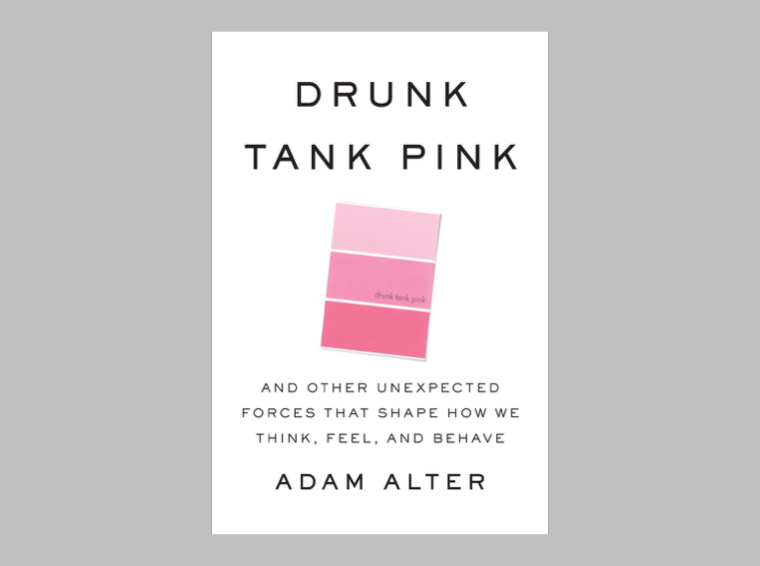
In this blog, I’m going to explore how you can use colour as a tool to help you study more effectively and keep your brain focused and engaged on the task at hand.
There is whole field of research dedicated to exploring the impact of different colours.
One fascinating study looked at the impact of a particular tone of pink (Baker-Miller Pink/Drunk Tank Pink) that appeared to sap people of their energy. Researcher Dr Alexander Schauss found staring at this shade of pink could lower people’s heart rate and pulse compared to staring at other colours.
A 7-month trial was conducted in which prison confinement cells were painted in this pink shade. According to Dr Schauss, when people were exposed for just 15 minutes to this pink colour in their prison cell, it made them more relaxed, less aggressive, and reduced the incidence of violent behaviour.

But before you race off to the hardware store to buy a tin of pink paint, you need to understand a few simple things about the psychology of colour.
The research suggests that colour can act as a powerful trigger. It can cue different emotions, thoughts, and behaviours. For instance, when you see a red Stop Sign or light, this captures your attention.
But how we react to colour also comes down to personal preference and particular contexts. Colour can have different meanings in different contexts (e.g., on Valentine’s Day red generally symbolises romance rather than “Danger! Look out!”).
The bottom line is this: when it comes to colour you need to experiment to see what works for you.
Colour can evoke particular states (e.g., a state of calm or alertness). It can also perk up your brain and transform a dry, boring subject into something that’s a little bit more novel and interesting for your brain.
Below I share 9 ways you can use colour to study and work more effectively.
There’s something about a brightly coloured post-it note that captures our attention. This is why I love using post-it notes to help focus my mind and stay on track.
On a post-it note, I create a list of no more than three things that I need to do. Once I’ve completed those tasks, I scrunch up the post-it and throw it in the bin. This action feels surprisingly satisfying! I’ll then grab a fresh post-it note (often in a different colour) to create a new list.
If I’m not sure how to get started with a task (e.g., Task: Write blog post on colour), I’ll grab another post-it note and I’ll scribble down the first tiny action I can take to kick-start the process (e.g., Tiny action: Open Word document).
If you have trouble finding your study materials for each subject and they all look the same or are scattered all over the house, you can use colour to make it easier for you to find what you need.
Try assigning a particular colour to a subject. This makes it easier to stay organised and identify your materials. At home, I assign a light blue to my exercise files and folders. When it’s time to plan my workout for the day, I look for my light blue files and folders.
A simple and cheap way to colour code your materials without investing in brand new stationery is to gather a collection of paint swatches from your local hardware store. You can repurpose these as labels by cutting them into smaller sections and sticking them on your files, notebooks, etc.
Testing yourself with flashcards is a highly effective way to study for a test and/or exam. You can create your own flashcard decks by purchasing index cards in a range of different colours.
Try assigning certain colours to different subjects. Alternatively, you can simply pick a colour you want to work with depending on how you feel.
There are no hard and fast rules. Feel free to mix up your flashcard colours to keep things fresh for your brain.

Creating a mind map on a topic is a simple way to combat study fatigue and inject a little colour and creativity into your study sessions.
Although using different coloured pens isn’t absolutely essential for mind mapping, it’s well worth doing. I use different colours to create the different branches on my mind maps.
I have dozens of colourful mind maps at home. Despite my lack of drawing skills, these mind maps look great and are fun to review primarily due to the different coloured branches.
It’s important that you feel good in your study environment. If you feel good in your study space, you’re more likely to sit down and study there.
I’ve decorated my workspace by putting up colourful posters, inspiring and funny pictures, and artwork on my walls.
If you don’t have access to artwork/posters, you can print out colourful pictures and quotes of things that make you feel good. The addition of a few indoor plants can also help to liven up your space as well as purify the air.
Fluorescent highlighters feel really good to use. It can feel both fun and satisfying to strike things off your to-do list. You can also use these pens to time block different tasks/events in your diary and draw your attention to important tasks that you need to do.
Word of warning: When it comes to studying for a test or exam, I don’t recommend highlighting your books and/or notes as a way to learn. I know it feels good but research shows it’s an ineffective way to learn.

Red pen is often associated with failure and criticism. This is why seeing a teacher’s comments scribbled in red pen can trigger negative emotions in many of us.
Generally, we don’t like reading comments written by others in red pen. It feels nasty! But it turns out if you use a red pen to correct your own work, this can help you to pick up more errors.
Dr Adam Alter discusses one study that looked at the difference between using a blue pen and a red pen to correct an essay. Students who used a blue pen picked up on average 19 errors. In contrast, students using a red pen picked up an average of 24 errors.
But using a red pen has its limitations! If you are trying to solve a problem or taking a test, using a red pen can backfire by activating ‘avoidance motivation’. This is a distracting state of mind that can impair a student’s ability to solve problems and increase stress levels.
As a rule of thumb, use a blue or black pen when solving problems and taking tests. But when you need to cast a more critical eye on your work (e.g., in the proofreading phase), switch to using a red pen.
A lot of us use our phones as an easy way to escape from the boredom and discomfort we experience when doing our work. The apps on our phones are like candy. They are designed to be highly addictive and hijack our attention.
This is where you can be strategic with how you use colour: you can make your phone look more like a tool (and less like a toy) by turning on greyscale mode.
Viewing your phone in greyscale is a completely different experience to using it in full-colour mode. As a year 8 student recently shared with me:
“When I made my phone greyscale, it made it really boring to use.”
Try it and see for yourself!
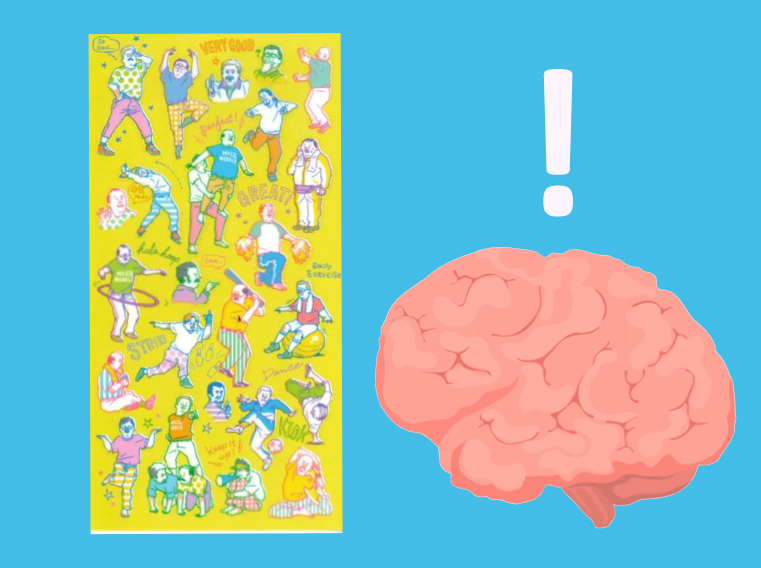
This strategy may seem juvenile. If it reminds you of being back in primary school and receiving gold stars, hear me out.
Too often we don’t stop to acknowledge and appreciate ourselves for accomplishing tasks. We finish one thing and we immediately shift our focus to the next task on our to-do list.
When you work this way, your work routine can quickly become soul destroying and your motivation can take a dive.
This is why every so often I pull out my fun stamps and colourful sheets of stickers. After completing a task, I pause and acknowledge what I’ve done by giving myself a stamp or a fun sticker. It’s a little celebration.
For some reason, my brain responds particularly well to quirky Japanese stickers featuring ogisan (Japanese grandfathers) exercising. We’re all different, so explore what stamps and stickers work for you.
Colours are lot of fun! Incorporating a little more colour into your studies and work life can take things to the next level and perk up your brain when it needs a little motivational boost.
But the colours that I like may not be the colours that you like. Your colour preferences may also vary from day to day. Notice the colours that make you feel good and have fun seeing how you can incorporate them into your study sessions.
I love the feeling.
I think, “Go me! Look at you go!” as I strike the pen through the list item.
But as good as it feels to cross things off, it’s not really about that. That’s not where the power of lists resides.
The power exists in making the list in the first place. Getting the thoughts out of your head and down on paper.
In his book Keep going: 10 ways to stay creative in good times and bad Austin Kleon states:
“Lists bring order to the chaotic universe. I love making lists. Whenever I need to figure out my life, I make a list. A list gets all your ideas out of your head and clears the mental space so you’re actually able to do something about them.
When I’m overwhelmed, I fall back on the old-fashioned to-do list. I make a big list of everything that needs to get done, I pick the most pressing thing to do, and I do it. Then I cross it off the list and pick another thing to do. Repeat.”
When I’m feeling really under the pump, I’ll go for a walk and scribble out a list while I’m walking.
I’m not sure which activity helps me more – the walking or the list making – but by the time I arrive home from my walk, I always feel less anxious and more in control.
If you haven’t been having much luck with to-do lists, you may have fallen into one of the following common traps:
If you look at your list and it says says things like ‘Mum’s birthday’ or ‘Study’, it’s time to make these list items crispy.
Crispy is a Behaviour Design term created by Stanford university Professor BJ Fogg. When you make a behaviour crispy, you get really clear on the specific behaviour you need to carry out.
Here are some examples I came up with to illustrate the difference between fuzzy and crispy list items:
Fuzzy to-do list item: Mum’s birthday
Crispy to-do list item: Call mum to wish her happy birthday after lunchFuzzy to-do list item: Study
Crispy to-do list item: Open Quizlet study deck and test myself for 5 minutes on the bus
When you ‘crispify’ a list item, you tighten it up. You make it crystal clear for your brain what you need to do next. This in turn makes it much easier for you to get started.
If your list is no longer working for you, feel free to abandon it and create a new one. As Psychiatrist Douglas Puryear says in his book Your life can be better:
“I make lists over and over, all day long. It’s not just about having the list; there is also benefit in making them. Writing down what I need to do is somehow calming and organizing, and therefore motivating. When I write things down, it’s as though I’m on top of them.”
Our brains get bored easily, so try making your list a little bit different every now and then.
Here are some simple ideas on how you can jazz up your next to-do list:
It doesn’t matter what medium or what materials you use to create your to-do list. What matters is that you get everything out of your head and you make each list item crispy.
If your to-do list is causing you to have a mini meltdown, back up. Ask yourself . . .
“Is this list too long? Can I cross a few things off?”
Create a short list from your big list – just three items (post-it notes are good for this). Then put away your long list. When you’ve completed those three items, create a new list of three from your long list.
During times of chaos, lists are your friends. Reach out and use this fabulous tool to lighten your mental load. You don’t need any special skills or talent to do this. Lists are for everyone.
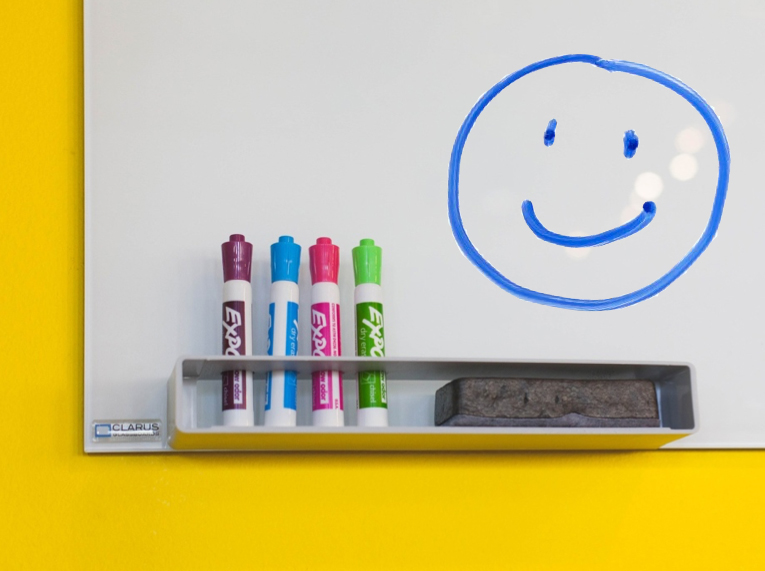
Take a tour of my home and you’ll see whiteboards in my office, dining room, bedroom and kitchen.
These whiteboards, covered in scribbled text and bad drawings, make my house look a little quirky. But upon closer inspection, you’ll see that these whiteboards help me to work my way through the chaos and confusion of life.
Here are a few ideas on how you can use a whiteboard to make life a little easier for yourself:
If you’re a perfectionist like myself, a large whiteboard is a great tool to decrease anxiety and overwhelm surrounding big projects.
Afraid of making a mistake? Stress less!
With one swipe of a cloth, you can wipe away any ideas you don’t like. So don’t hold back. Make a mess. Make a start.
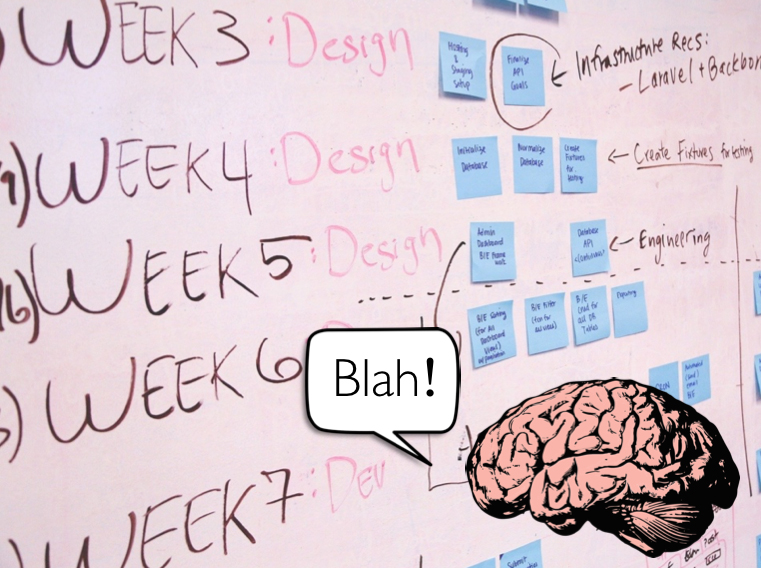
Have a lot going on in your life? I know this feeling all too well.
Most of us go through the day with lots of random thoughts swirling inside our heads. Unless we capture these thoughts, they can take up precious mental space and deplete our brainpower.
When I’m feeling overwhelmed, in order to reset and feel more in control, I stand up, head over to the closest whiteboard and I spend a few minutes scribbling out all the things that are on my mind. These things usually include:
• People to call and/or email
• Deadlines for projects
• Conversations to have with people
• Ideas for future projects
• Little irritants (things that are bugging me)
• Things I need to buy (usually food)
There’s something really powerful about getting your thoughts out of your head and onto a whiteboard. Try it and see how you feel after a brain dump session.
How can a whiteboard help you ace your exams?
Two words: active recall.
According to cognitive psychology, active recall (also known as retrieval practice) is the number one way to retain information. Research shows it’s a much more effective way to study than rereading your books or highlighting your notes.
Here’s how you can do a quick active recall session with a whiteboard:
1. Grab your whiteboard markers and a copy of your syllabus.
2. Flip straight to the unit content section.
3. Now choose a syllabus point.
4. Set a timer for 5 minutes.
5. Without looking at your notes or books, write and/or draw as much as you can remember on that syllabus point.
6. When the timer goes off, check to see how much you recalled correctly and where the gaps in your knowledge are.
7. Got something wrong or missed an important bit of information? Grab a different coloured pen and write that stuff down.
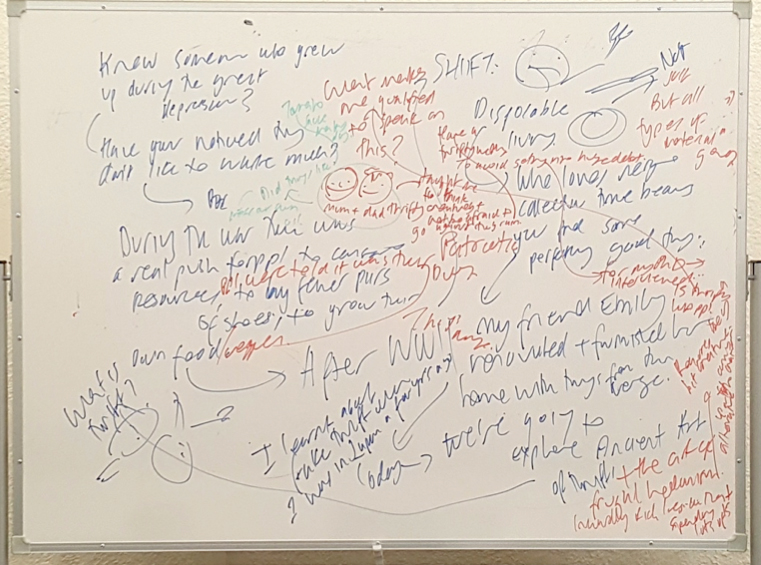
If you need to learn a presentation in a short period of time, I highly recommend doing active recall on a whiteboard.
This is how I learn all my presentations in a short period of time. I set a timer for 25 minutes and do an active recall session (I can’t stop until the timer goes off).
These sessions don’t look pretty (see example above) but it doesn’t matter. What matters is the process of seeing how the content flows, bringing the information to mind and identifying the gaps in my knowledge.
Need to start working on a big project? Find yourself procrastinating? Use a whiteboard to break down that big scary projects into bite size chunks. Set a timer for 3-5 minutes and map out all the tasks that you need to do.
When the timer goes off, pick a different coloured pen and write down the first small action you can take to make a start.
If this task is still too scary for your brain, break it down again (write down an even smaller starter step). Continue breaking the task down until the task is so small that it’s not scary or overwhelming for your brain.
Create a simple to-do list on your whiteboard. After you complete each task, look at your whiteboard and strike a line through it, give it a tick or wipe it out (sometimes for a bit of fun I do all three). Then pick another item and get to work.
The aim is to get through as many items on your list as possible.
If you’re feeling stuck, you can use a whiteboard to work through the problem by deploying a simple strategy. Here’s what you do:
1. Grab two different coloured whiteboard markers.
2. Grab one marker and put yourself in the shoes of a kind friend. Imagining that you are this kind friend, write down a question to yourself. It could be something along the lines of, “What’s going on?” or “Why are you feeling stuck?”
3. With the other coloured pen, write your answer (this time as you, not as your kind friend).
4. Continue asking yourself questions and answering them (alternating between your different coloured pens). Keep doing this until you get some insights and clarity about what’s going on.
If you’re trying to establish a new habit, write the behaviour down on the whiteboard (e.g. “Do two push ups after I finish each study session”). Every time you do the behaviour give yourself a tick on the whiteboard. It’s motivating for your brain to see the ticks add up. This in turn makes you want to engage in the behaviour even more. Before you know it, you’ll be doing the behaviour without even thinking.
Now you might be wondering . . .
Of course you can use a big sheet of butcher’s paper to help you learn, plan and brainstorm.
But for me, big sheets of paper can be intimidating. Like a brand new notebook, who wants to mess it up? Not me!
But with whiteboards, you can breathe a sigh of relief. Because it really doesn’t matter if you make a mess. At the end of the day, you can take a photo of the whiteboard and wipe that mess away.
Whiteboards also allow for more movement in your day. Since you need to stand up and move around to use a whiteboard, you’re spending less time in a chair.
Research shows sitting for long periods of time is bad for your health. So the more time you can spend working on your feet, the better!
When it comes to whiteboards, bigger is generally better (up to a point). You need room to move and make a mess. You don’t want to cramp your style.
But if the whiteboard is too big, it’s going to be kind of clunky. It will take up a lot of space.
I recently purchased a large whiteboard that can attach to my wall. This is my favourite whiteboard as it’s the biggest and it doesn’t get in the way.
There’s no need to rush out and buy a stack of whiteboards.
I acquired most of my whiteboards slowly over time for free. Some were collected from university dumpsters, roadside verges, Gumtree and friends who relocated overseas.
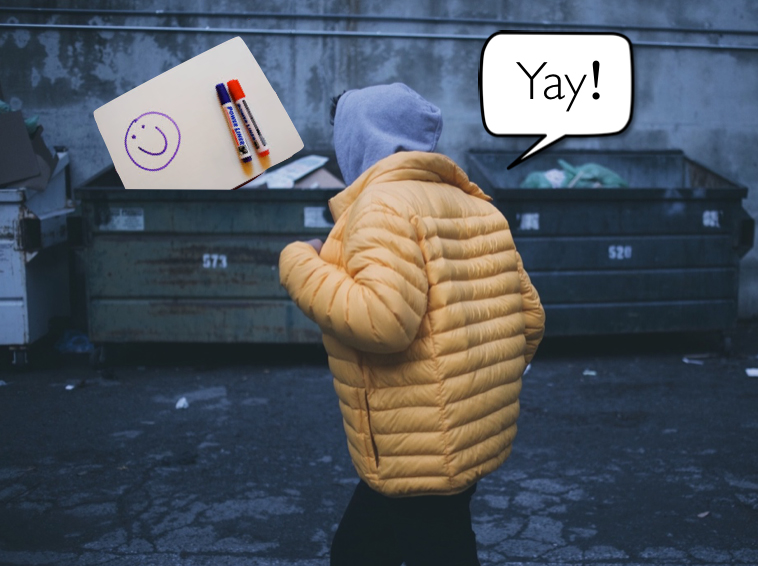
But here’s a tip . . .
When I need a change of scenery, I head to my local library and use the whiteboard that’s located in the private study room.
Keep a look out for whiteboards in your school, university or local library. I guarantee, you’ll start to see them everywhere. Don’t be afraid to use them (whiteboards are there to be used).
If you come prepared with your own set of whiteboard markers and a cloth eraser, you can get a quick whiteboard session in. At the end of the session, take a step back and look at what you’ve managed to accomplish. Notice if your whiteboard sessions leaves you feeling slightly better than before (I usually feel calmer and more in control).
Then take a quick snap with your phone so you can capture your ideas . . . before wiping all that mess away.
Dr Jane Genovese delivers interactive sessions on learning to learn, combating procrastination, exam preparation, how to focus in the age of distraction, habit formation and much, much more!
Get FREE study and life strategies by signing up to our newsletter:
© 2024 Learning Fundamentals